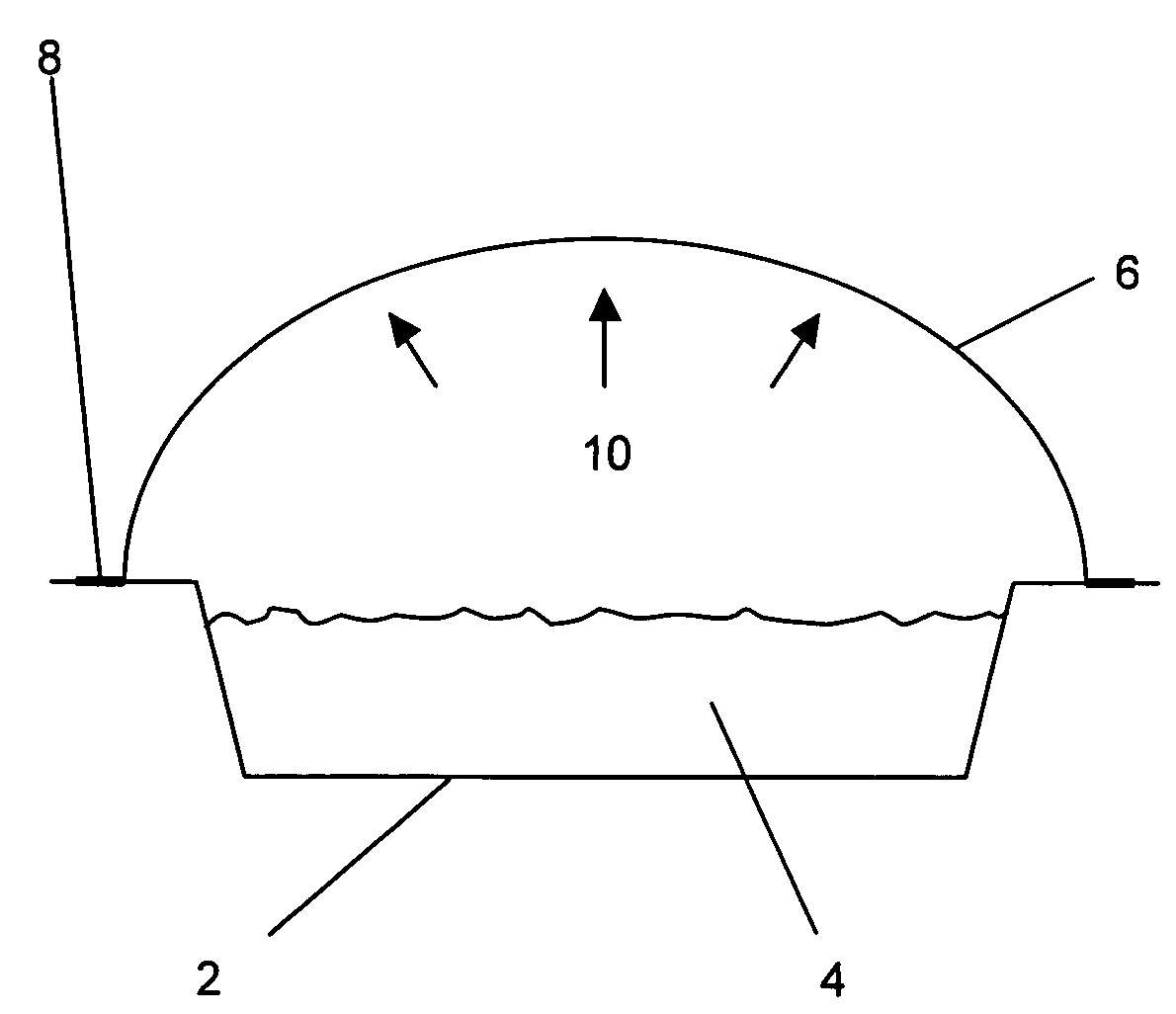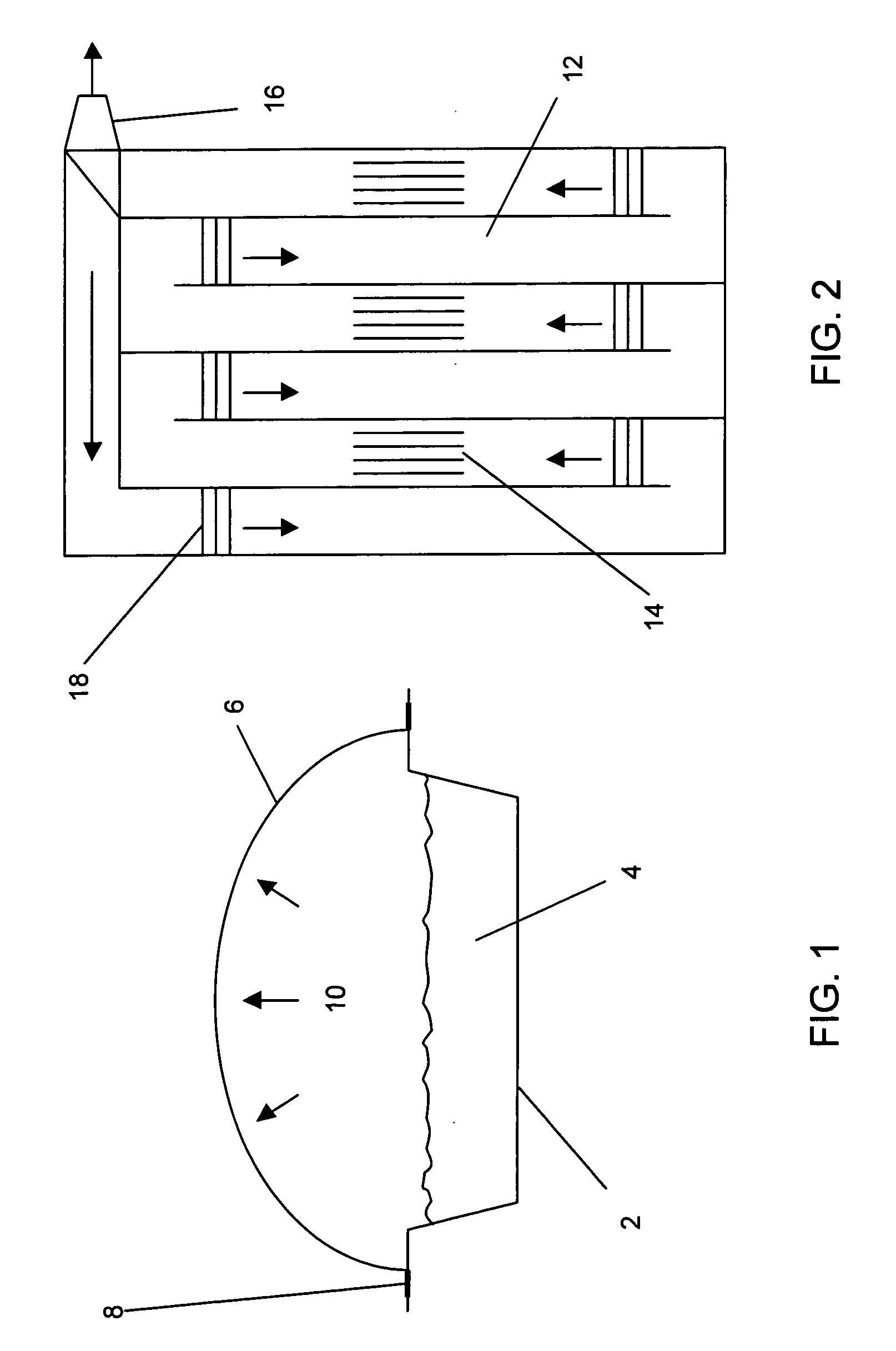Controlled growth environments for algae cultivation
a growth environment and algae technology, applied in the field of enclosed environments, can solve the problems of direct human use, difficult to achieve the effect of this potential, and uncertainty about how to achieve i
- Summary
- Abstract
- Description
- Claims
- Application Information
AI Technical Summary
Problems solved by technology
Method used
Image
Examples
example 1
[0079]Each growth system is constructed of either a single long trough arranged in a serpentine configuration or from individual troughs arranged in a regular pattern but not connected in a serpentine arrangement. Each trough is fitted with a flexible plastic cover inflated to form a flattened dome. The system of troughs covers an area of one hectare, and multiple systems may be laid out on available land to fill it as completely as possible.
[0080]The trough is two meters in width, so the total length for an area of one hectare is 5,000 m. Each individual run is 100 m long, with 50 runs parallel to each other to form a system which is approximately square with dimensions of 100 m by 100 m (thus giving 10,000 m2 or one hectare of trough area).
[0081]The trough is formed by first, precisely leveling a one-hectare area of ground, then forming a channel in the ground two meters wide and 30 cm deep with a small separation between adjacent channels sufficient only to allow passage by foot ...
example 2
[0086]In the foregoing one-hectare system, the covered trough is now ready for the introduction of the water, nutrients, and algae needed for growth. Water is supplied from holding tanks where it has been filtered and treated to remove unwanted algae and other organisms, and brought to approximately the desired temperature. Sufficient water is added to bring the depth in the entire system to approximately 22 cm, somewhat below the top of the 30 cm depth of the trough. When in operation, additional water will be added by the same means to maintain this depth.
[0087]The cover is inflated and positive pressure is maintained in the system thereafter, keeping the cover lifted into a flattened dome. All air or gases injected into the system are filtered to prevent intrusion of unwanted organisms. Filtered nutrients are added through injector nozzles to achieve the optimal balance for growth, and the algae are then added. The circulation paddles will keep the combination of water, nutrients...
example 3
[0088]Optimal growth may be achieved by a mixture of blue-green algae (cyanobacteria) such as Synechococcus, with a green algae such as Chlorella. The Synechococcus fixes nitrogen (making it bio-available) from atmospheric N2 dissolved in the water, thus reducing costs by avoiding the need for externally-supplied and relatively expensive synthetic nitrogen fertilizer. In addition, its genome has been sequenced. The advantage of Chlorella is that it is cultivated widely and is well-known and its genome is being sequenced. For Synechococcus a strain will be used which will thrive at app. 35° C., which is a good temperature for either Chlorella, and will be the temperature of the entire system.
[0089]The most important nutrients are carbon and nitrogen. If the system is intended for light-stage (autotrophic or photosynthetic) growth, the carbon will come from carbon dioxide either from the atmosphere or from an external source, and bio-available nitrogen from either blue-green algae or ...
PUM
 Login to View More
Login to View More Abstract
Description
Claims
Application Information
 Login to View More
Login to View More - R&D
- Intellectual Property
- Life Sciences
- Materials
- Tech Scout
- Unparalleled Data Quality
- Higher Quality Content
- 60% Fewer Hallucinations
Browse by: Latest US Patents, China's latest patents, Technical Efficacy Thesaurus, Application Domain, Technology Topic, Popular Technical Reports.
© 2025 PatSnap. All rights reserved.Legal|Privacy policy|Modern Slavery Act Transparency Statement|Sitemap|About US| Contact US: help@patsnap.com



